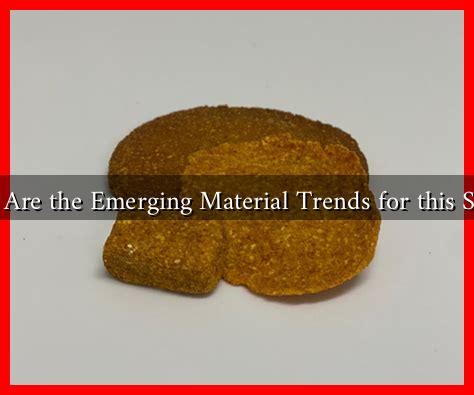-
Table of Contents
What Are the Emerging Material Trends for This Season?
As the seasons change, so do the materials that dominate the fashion, interior design, and product development landscapes. This season, we are witnessing a shift towards sustainability, innovation, and versatility in material choices. In this article, we will explore the emerging material trends that are shaping various industries, highlighting their significance and potential impact.
Sustainable Fabrics: The Rise of Eco-Conscious Choices
One of the most significant trends this season is the increasing demand for sustainable fabrics. As consumers become more environmentally conscious, brands are responding by incorporating eco-friendly materials into their collections. Some notable sustainable fabrics include:
- Organic Cotton: Grown without synthetic pesticides or fertilizers, organic cotton is gaining popularity for its reduced environmental impact.
- Tencel: Made from sustainably sourced wood pulp, Tencel is biodegradable and known for its softness and breathability.
- Recycled Polyester: Derived from post-consumer plastic bottles, recycled polyester helps reduce waste and is often used in activewear and outerwear.
According to a report by Grand View Research, the global sustainable textile market is expected to reach $8.25 billion by 2027, reflecting a compound annual growth rate (CAGR) of 9.7%. This growth is driven by consumer demand for transparency and ethical production practices.
Innovative Textiles: Technology Meets Fashion
Another trend gaining traction this season is the integration of technology into textiles. Innovative materials are being developed to enhance functionality and performance. Some examples include:
- Smart Fabrics: These textiles can respond to environmental stimuli, such as temperature or moisture, making them ideal for activewear and outdoor gear.
- 3D-Printed Materials: 3D printing technology allows for the creation of complex designs and structures, reducing waste and enabling customization.
- Biodegradable Materials: Innovations in biodegradable textiles are paving the way for products that can decompose naturally, minimizing their environmental footprint.
Brands like Nike and Adidas are already experimenting with these technologies, creating products that not only look good but also perform exceptionally well. For instance, Adidas’ Futurecraft Loop shoes are made entirely from recyclable materials, showcasing the potential of circular fashion.
Natural Fibers: A Return to Tradition
This season also marks a resurgence of natural fibers, as designers seek to reconnect with traditional craftsmanship. Materials such as linen, hemp, and wool are making a comeback due to their durability and timeless appeal. Key benefits of natural fibers include:
- Breathability: Natural fibers allow for better air circulation, making them ideal for warmer weather.
- Biodegradability: Unlike synthetic materials, natural fibers decompose, reducing landfill waste.
- Comfort: Natural fibers often provide superior comfort and feel against the skin.
Brands like Eileen Fisher and Patagonia are leading the charge in promoting natural fibers, emphasizing their commitment to sustainability and ethical sourcing.
Color and Texture Trends: Embracing Bold Choices
In addition to material innovations, this season is characterized by bold color palettes and diverse textures. Designers are experimenting with:
- Vibrant Colors: Bright hues such as electric blue, fiery red, and sunny yellow are making a statement in both fashion and interior design.
- Textural Contrast: Mixing materials like soft knits with rugged leathers or smooth silks with coarse wools creates visual interest and depth.
According to the Pantone Color Institute, colors like “Viva Magenta” are trending this season, reflecting a desire for optimism and energy in design.
Conclusion: Embracing Change in Material Trends
This season’s emerging material trends reflect a broader shift towards sustainability, innovation, and creativity. As consumers become more aware of their choices, brands are responding by prioritizing eco-friendly materials, integrating technology, and celebrating traditional craftsmanship. The combination of vibrant colors and diverse textures further enhances the appeal of these materials, making them not only functional but also visually striking.
As we move forward, it is essential for both consumers and brands to embrace these trends, fostering a more sustainable and innovative future in design. By choosing materials that align with our values, we can contribute to a more responsible and beautiful world.
For more insights on sustainable fashion and material trends, visit Sustainable Fashion.

